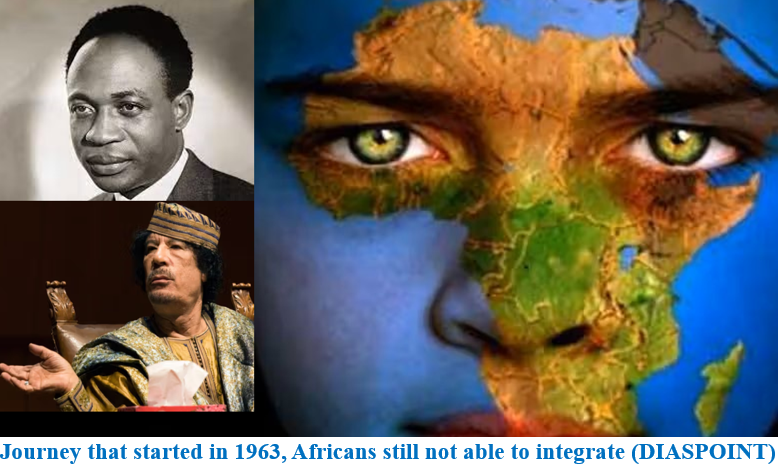From Organisation of African Unity to African Union A journey through Africa’s political unity
Post By Diaspoint | May 30, 2024

The African Union (AU) is a continental organization comprising 55 member states, established to promote unity and solidarity among African countries, to spur economic development, and to promote international cooperation.
Its formation was driven by the need to address common challenges and to ensure a stronger and more cohesive political and economic bloc.
Here is a detailed look at the history and evolution of the African Union.
Origins: The Organization of African Unity (OAU)
The precursor to the African Union was the Organization of African Unity (OAU), established on May 25, 1963, in Addis Ababa, Ethiopia. The OAU was founded by 32 African states with the primary objectives of eradicating colonialism and promoting unity and cooperation among African nations. Key founding figures included Kwame Nkrumah of Ghana, Haile Selassie of Ethiopia, and Jomo Kenyatta of Kenya.
The OAU’s mission was defined by three main goals:
To promote the unity and solidarity of African states.
To coordinate and intensify cooperation for development.
To safeguard the sovereignty and territorial integrity of member states.
Despite these ambitions, the OAU faced criticism for its inability to effectively intervene in conflicts and for its policy of non-interference in the internal affairs of member states.
Transition to the African Union
The need for a more effective and dynamic organization led to the transformation of the OAU into the African Union. This change was initiated during the 4th Extraordinary Session of the Assembly of Heads of State and Government of the OAU in Sirte, Libya, in 1999, where the Sirte Declaration called for the establishment of the African Union.
The African Union (AU) is a continental organization comprising 55 member states, established to promote unity and solidarity among African countries, to spur economic development, and to promote international cooperation.
Its formation was driven by the need to address common challenges and to ensure a stronger and more cohesive political and economic bloc.
Here is a detailed look at the history and evolution of the African Union.
Origins: The Organization of African Unity (OAU)
The precursor to the African Union was the Organization of African Unity (OAU), established on May 25, 1963, in Addis Ababa, Ethiopia. The OAU was founded by 32 African states with the primary objectives of eradicating colonialism and promoting unity and cooperation among African nations. Key founding figures included Kwame Nkrumah of Ghana, Haile Selassie of Ethiopia, and Jomo Kenyatta of Kenya.
The OAU’s mission was defined by three main goals:
To promote the unity and solidarity of African states.
To coordinate and intensify cooperation for development.
To safeguard the sovereignty and territorial integrity of member states.
Despite these ambitions, the OAU faced criticism for its inability to effectively intervene in conflicts and for its policy of non-interference in the internal affairs of member states.
Transition to the African Union
The need for a more effective and dynamic organization led to the transformation of the OAU into the African Union. This change was initiated during the 4th Extraordinary Session of the Assembly of Heads of State and Government of the OAU in Sirte, Libya, in 1999, where the Sirte Declaration called for the establishment of the African Union.
Read More from original source
